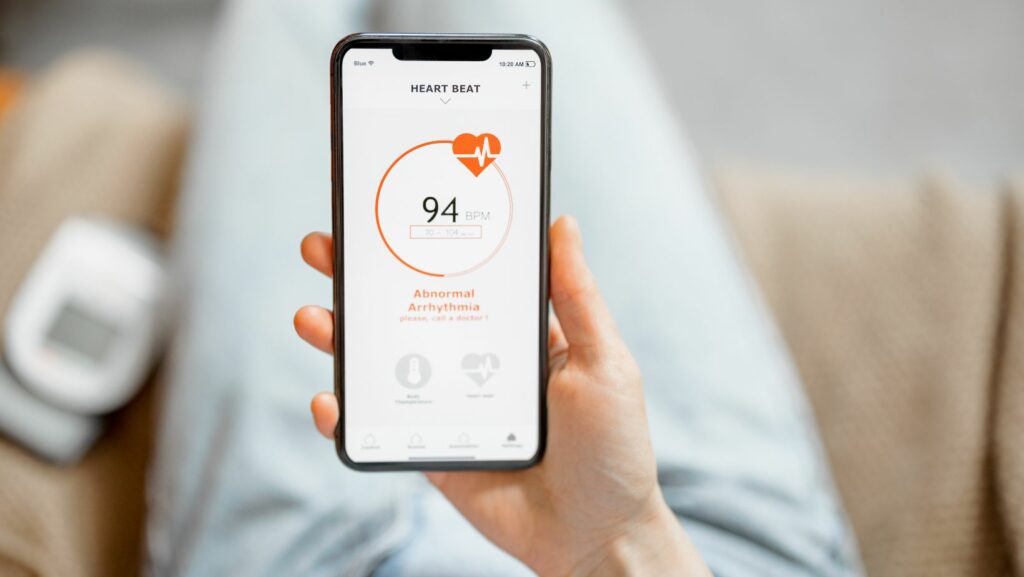In today’s rapidly evolving digital landscape, health and wellness are no longer confined to traditional boundaries. Digital health and wellness represent a transformative approach to managing and improving health through technology. From wearable fitness trackers to telemedicine services, these tools are reshaping how individuals monitor their health and access medical care.
What is Digital Health and Wellness
 Digital health and wellness integrate modern technology into the monitoring and enhancement of health. These practices leverage digital tools to promote physical and mental well-being.
Digital health and wellness integrate modern technology into the monitoring and enhancement of health. These practices leverage digital tools to promote physical and mental well-being.
Digital health refers to the field involving the use of computing platforms, connectivity, software, and sensors for health care and related uses. It encompasses a range of technologies including telemedicine, wearable devices, mobile health apps, and artificial intelligence. These components work together to improve patient care, enhance health outcomes, and streamline healthcare delivery processes.
The Scope of Wellness Technologies
Wellness technologies consist of applications and devices that assist individuals in managing their own health and well-being. These technologies include, but are not limited to, fitness trackers, diet and nutrition apps, mental health apps, and personalized medicine. They often gather personal health data to provide tailored advice, fostering a proactive approach to health. This segment of digital health is crucial for enabling everyday users to make informed health decisions based on real-time data.
The Impact of Digital Health on Modern Healthcare
Digital health technologies have revolutionized the way healthcare services are delivered, making them more efficient and patient-centered. With tools ranging from electronic health records to AI-driven diagnostics, digital health leverages modern technology to enhance the quality and accessibility of healthcare.
Improving Patient Care Through Technology
 Digital health tools, such as remote monitoring devices and telehealth platforms, enhance patient care by making it continuous and proactive. With connected devices, such as wearables and smart health monitors, healthcare providers can track patient health metrics like heart rate, blood pressure, and glucose levels in real time. This timely data allows for rapid response to potential health issues before they escalate into more serious conditions. For example, remote patient monitoring can detect irregular heartbeats, enabling earlier interventions that might prevent adverse outcomes like stroke.
Digital health tools, such as remote monitoring devices and telehealth platforms, enhance patient care by making it continuous and proactive. With connected devices, such as wearables and smart health monitors, healthcare providers can track patient health metrics like heart rate, blood pressure, and glucose levels in real time. This timely data allows for rapid response to potential health issues before they escalate into more serious conditions. For example, remote patient monitoring can detect irregular heartbeats, enabling earlier interventions that might prevent adverse outcomes like stroke.
Telehealth services, another pillar of digital healthcare, facilitate virtual consultations, allowing patients to receive expert guidance without the need to travel.
Enhancing Access to Medical Information
The integration of technologies such as Electronic Health Records (EHRs) and health information exchanges dramatically enhances the accessibility of medical information. EHRs allow for the consolidation of patient data into a single record that is easily shared across different healthcare providers. Patients benefit from more coordinated care, which helps in reducing duplicated tests and conflicting treatments. Moreover, healthcare providers gain instant access to comprehensive patient histories, which can significantly improve diagnostic accuracy and treatment outcomes.
Furthermore, health information technology supports the dissemination of medical knowledge among professionals and the public. Online platforms and medical databases give healthcare providers the ability to stay updated with the latest research, clinical guidelines, and treatment protocols.
Key Components of Digital Health and Wellness
Digital health and wellness encompass a broad spectrum of tools and practices designed to enhance healthcare and well-being through technology. Below are some key components that highlight the scope and utility of digital health initiatives.
Telehealth Services
 Telehealth services allow patients to consult with healthcare providers remotely. This technology facilitates access to medical consultations, follow-up appointments, and specialist services through video calls, emails, or instant messaging. If patients are in remote areas, they benefit greatly from teleheath services by gaining access to timely medical advice.
Telehealth services allow patients to consult with healthcare providers remotely. This technology facilitates access to medical consultations, follow-up appointments, and specialist services through video calls, emails, or instant messaging. If patients are in remote areas, they benefit greatly from teleheath services by gaining access to timely medical advice.
Wearable health technology includes devices such as fitness trackers, smartwatches, and heart rate monitors. These gadgets collect health data in real-time, allowing users and healthcare providers to monitor vital signs and activity levels continuously. Practitioners can use this data to tailor treatment plans that address individual health needs more effectively.
Electronic Health Records (EHRs)
Electronic Health Records (EHRs) are digital versions of patients’ paper charts. EHRs are real-time, patient-centered records that make information available instantly and securely to authorized users. They improve the accuracy of diagnoses and enhance the coordination of care by ensuring all healthcare providers have up-to-date information on their patients.

